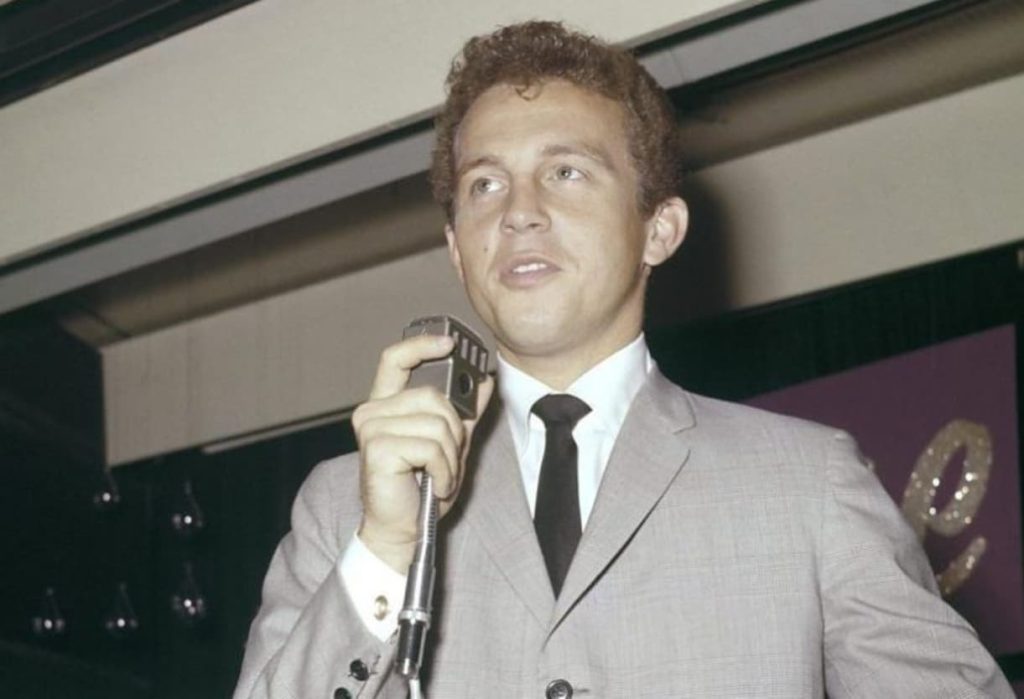
A Whisper of Satin, A Memory in Blue: When Vinton Painted the Air with Velvet Nostalgia
Bobby Vinton’s “Blue Velvet” is a poignant ballad that captures the bittersweet essence of lost love, a melancholic reverie draped in the soft, textured imagery of its titular fabric. Released in 1963, a year that still held the lingering echoes of early rock ‘n’ roll while the British Invasion loomed, “Blue Velvet” ascended to the coveted number one spot on the Billboard Hot 100, nestling there for three weeks. It was a gentle giant, a slow dance in a rapidly changing musical landscape, a testament to the enduring power of classic, heartfelt melody. The song, a revival of a 1951 hit originally sung by Tony Bennett, found new life in Vinton’s tender rendition, becoming an anthem for a generation grappling with the shifting tides of romance and memory.
Now, let’s step back, shall we? Picture a time when records spun slowly, a time when the airwaves were filled with the crooning voices of men who understood the language of a broken heart. Bobby Vinton, with his smooth, almost velvety baritone, was a master of this language. He wasn’t a rebel, not a shaker or a mover in the same way the rising rock stars were, but he possessed a sincerity that resonated deeply. “Blue Velvet” was a return to form for Vinton, a moment where he captured a certain kind of wistful longing that seemed to hang in the air like the scent of old perfume. The song’s story is one of rediscovery, a revival that breathed new life into an already beautiful melody. The original, penned by Bernie Wayne and Lee Morris, had a quiet charm, but Vinton’s interpretation, with its lush orchestration and his own emotive delivery, transformed it into something truly special.
The song’s meaning, at its core, is a simple tale of lost love, a reminiscence of a romance that faded like a dream. The “blue velvet” itself serves as a powerful metaphor, conjuring images of softness, elegance, and a kind of romantic ideal. It’s the fabric of memories, the touch of a lost lover’s dress, the color of a bygone era. The lyrics paint a picture of a man haunted by the ghost of his past, his heart aching for a love that slipped through his fingers. “She wore blue velvet, bluer than velvet was the night,” he sings, his voice filled with a palpable sense of longing. It’s a lament, a sigh, a moment of quiet reflection in a world that often seemed too loud.
In a time when the world was changing rapidly, “Blue Velvet” offered a moment of solace, a chance to pause and reflect on the enduring power of love and loss. It was a song that spoke to the heart, a reminder that even in the midst of change, some emotions remain timeless. The song’s success solidified Bobby Vinton’s place as a master of the romantic ballad, a singer who could evoke a sense of nostalgia with just a few notes. The album, simply titled “Blue Velvet“, capitalized on the single’s success, becoming a fixture in many homes.
The track’s enduring appeal also found a resurgence decades later, when it was prominently featured in David Lynch’s 1986 film of the same name. The movie, with its surreal and unsettling atmosphere, used “Blue Velvet” to underscore the film’s themes of innocence lost and the dark undercurrents that lurk beneath the surface of seemingly idyllic lives. It was a testament to the song’s ability to transcend generations, to evoke a sense of timeless longing that resonates with listeners of all ages. To those of us who remember the era, it’s a whisper of satin, a memory in blue, a song that still holds the power to transport us back to a time when love was a slow dance and heartbreak was a velvet-draped reverie.